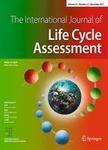版权所有:内蒙古大学图书馆 技术提供:维普资讯• 智图
内蒙古自治区呼和浩特市赛罕区大学西街235号 邮编: 010021

作者机构:Anadolu Univ Fac Engn Dept Environm Engn Iki Eylul Campus TR-26555 Eskisehir Turkey
出 版 物:《INTERNATIONAL JOURNAL OF LIFE CYCLE ASSESSMENT》 (国际生命圈评估杂志)
年 卷 期:2016年第21卷第4期
页 面:465-475页
核心收录:
学科分类:0830[工学-环境科学与工程(可授工学、理学、农学学位)] 08[工学]
基 金:Anadolu University Scientific Research Projects Commission [1003 F106]
主 题:Biocomposite film Biodegradability LCA Monte Carlo simulation Packaging Polyethylene
摘 要:A new biodegradable film, based on orange peel-derived pectin jelly and corn starch developed in our labs, was environmentally compared with a low-density polyethylene (LDPE) film. An environmental assessment was realized in two stages to individually determine the environmental impact resulting from production-shaping processes and the biodegradation performance of the films. Firstly, a prospective cradle-to-gate life cycle assessment (LCA) was performed using a CML-IA method implemented in SimaPro 8.0.1. Secondly, an aerobic biodegradation was simulated as directly disposing of the films in soil according to ASTM D 5988-03. The functional unit considered in this study was 1 m(2) of packaging film. The films were compared for impact categories of abiotic depletion (elements and fossil fuel), global warming potential, ozone layer depletion, human toxicity, fresh water aquatic ecotoxicity, marine aquatic ecotoxicity, terrestrial ecotoxicity, photochemical oxidation, acidification, and eutrophication. A Monte Carlo simulation was realized to determine the uncertainty levels. According to impact assessment results and major sources of uncertainties, two predictive improvement scenarios were performed for commercial scale production and compared with biocomposite film at the laboratory scale. LCA results show that biocomposite film has a slightly higher impact than LDPE film for all categories with probabilities ranging between 50 and 100 % except for acidification. The categories that have uncertainty (terrestrial ecotoxicity, abiotic depletion (element), photochemical oxidation, human toxicity, and fresh water aquatic ecotoxicity) were mainly resulted from electricity consumption for extrusion and film forming and modified starch addition. These two processes are mainly responsible for the environmental impact of the biocomposite film. Prospective LCA showed that improvement of the process in this manner would decrease the environmental impact. On the other hand, the